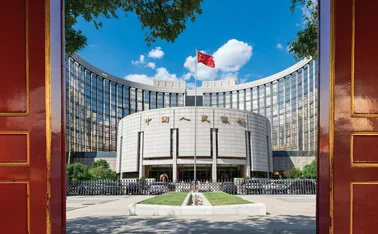
Payments and market infrastructure provider of the year: Eurex Clearing
Driving efforts to help the OTC derivatives industry to meet new regulations

Payment and financial market infrastructure providers have come under significant pressure to improve their processes and service offerings since the advent of the global financial crisis. In particular, a G-20 requirement that most over-the-counter derivatives contracts must be cleared through central counterparties (CCPs) has resulted in a scramble to reshape the architecture for off-exchange instruments.
Eurex Clearing – a company with more than 170 clearing members in 16 countries, which manages a collateral pool of around €51 billion ($63 billion) while processing gross risks valued at almost €15.7 trillion every month – was already a potent force for clearing repos, securities lending and cash markets. But it now appears well poised to capture a large portion of OTC derivatives activity as well. The German-owned company was among the first CCPs to comply with new regulatory requirements under European Market Infrastructure Regulation (Emir) and has introduced important new cross-margining services for clients, as well as bolstering its risk management capabilities.
Emir legislation came into force in August 2012, with the objectives of reducing credit risks and increasing transparency in the OTC derivatives market, while also harmonising risk management standards for CCPs in the European Union. All CCPs were required to apply for new regulatory approval under the new rules. Eurex Clearing was authorised in April 2014. “The authorisation confirms the high risk standards of Eurex Clearing,” says Oliver Haderup, chief compliance officer of Eurex Clearing.
“All market participants are very busy adapting to the profound changes of the new regulatory environment,” adds Jens Quiram, head of business development at Eurex Clearing. “While compliance with the new rules naturally is everyone’s immediate focus, the new rules also offer opportunities. Our focus is on creating additional value for our customers, for instance through strong client protection and porting in a default.”
One key differentiator in risk management is that Eurex Clearing calculates margin requirements at short intervals – essentially in real-time – throughout the day, something described as notable among CCPs. “Other CCPs do intraday risk management calculations and margin calls, but Eurex does so more systematically than most others. It is then ready to call for margin at almost any time it feels necessary,” says an expert on CCPs at one of the world’s largest central banks.
Its comprehensive risk management capabilities have allowed Eurex Clearing to introduce cross-margining between interest rate swaps and fixed-income futures via its Eurex Clearing ‘Prisma’ platform since May 2014. Eugene Stanfield, managing director and head of FIC derivatives clearing and execution services at Commerzbank, adds that cross-margining of interest rate swaps with a European entity “is only possible through Eurex Clearing”. “We have a lot of clients looking to meet their OTC clearing obligations, even though it is not yet mandatory in Europe, and Eurex’s cross-margining provides them with a mechanism to bring down their margining costs, which is a clear advantage,” he says.
This allows clearing members and clients to benefit from netting off their margin positions, so improving their capital efficiency without increasing market risk. “Eurex Clearing has led much of the discussion on cross-product margining, with the aim of reducing the ultimate amount of margin that is called from clearing members and their clients,” says Simon Puleston Jones, chief executive of FIA Europe.
Segregated accounts
Eurex also faced a major documentation issue as Emir bans the use of segregated accounts. The new rules require CCPs to offer a minimum of two segregation types to hold margin lodged against cleared positions: individually segregated accounts and commingled omnibus accounts. “Operational efficiency and legal certainty were key targets in designing our solution. Direct integration of client asset tagging into the collateral management allowed us to establish fully scalable account structures. In addition we aligned legal documentation of the CCP with industry standard documentation, so clearing members and clients can build on their existing agreements,” says Quiram.
Segregation has received additional attention as buy-side participants, such as corporate treasurers trying to hedge their risks, want assured protection and portability of their assets in the event of a CCP default. “Eurex Clearing’s approach is to give very specific identification of the status of each segregated account, with the objective of taking out much of the doubt about other possible conflicts of claims or rights that might arise in times of financial stress,” says Richard Heckinger, vice-president and director of market analytics in the economic research department of the Chicago Federal Reserve.
Puleston Jones adds: “Eurex Clearing’s security interest-based model to Emir segregation, known as the ‘difference-claim’ model, has proven to be an interesting and innovative way of meeting some aspects of the account segregation requirements of Emir, while respecting the confines of German law.”
Bundesbank liquidity line
Eurex Clearing also boasts a wide range of eligible collateral – more than 25,000 securities that clients can post with the CCP. “Central bank eligibility of our collateral is a key criterion. As a bank, Eurex Clearing can pledge collateral with Deutsche Bundesbank, allowing central bank liquidity access without having to sell collateral in a stressed market or being dependent on commercial bank credit – a huge advantage in a severe market crisis,” says Quiram.
While Eurex has placed significant effort in addressing vital systemic risks in the event of financial calamity, it is also seeking to expand its frontiers. Eurex Clearing’s parent group Deutsche Boerse also unveiled plans in February 2014 to set up a clearing house in Singapore, which should be operational in 2016.
“Asia is the key focus in expanding our global distribution. The new clearing house can leverage our offering using the same infrastructure and processes as our clients know from Eurex Clearing,” says Quiram. “An operational hub in the region under local supervision as part of our global offering will be an excellent basis to expand our services and participate in the growth of the Asian markets.”
The Central Banking awards were written by Christopher Jeffery, Robert Pringle, Tristan Carlyle, Daniel Hinge, Arvid Ahlund and Maria Espadinha.
Only users who have a paid subscription or are part of a corporate subscription are able to print or copy content.
To access these options, along with all other subscription benefits, please contact info@centralbanking.com or view our subscription options here: http://subscriptions.centralbanking.com/subscribe
You are currently unable to print this content. Please contact info@centralbanking.com to find out more.
You are currently unable to copy this content. Please contact info@centralbanking.com to find out more.
Copyright Infopro Digital Limited. All rights reserved.
As outlined in our terms and conditions, https://www.infopro-digital.com/terms-and-conditions/subscriptions/ (point 2.4), printing is limited to a single copy.
If you would like to purchase additional rights please email info@centralbanking.com
Copyright Infopro Digital Limited. All rights reserved.
You may share this content using our article tools. As outlined in our terms and conditions, https://www.infopro-digital.com/terms-and-conditions/subscriptions/ (clause 2.4), an Authorised User may only make one copy of the materials for their own personal use. You must also comply with the restrictions in clause 2.5.
If you would like to purchase additional rights please email info@centralbanking.com








